|
|
People say that the most expensive piece of medical equipment is the doctor's pen
Atul Gawande
Crucial to the work are a large number of facilities at the Universities of the Team Members, at nearby
Universities as well as DOE User Facilities at National Labs and in a few cases International Collaborators.
Below is an incomplete list of these.
|
 The Center for Electrochemical Science and Engineering (CESE) at the University of Virginia is built on the foundation
of the Applied Electrochemistry Laboratories. In 1986,
the Virginia Center for Innovative Technology identified CESE as a Technology Development Center. CESE
is a multi-disciplinary research effort which includes activities in the Departments of Materials Science and
Engineering and Chemical Engineering, as well as interactions with Electrical Engineering, Computer Science,
and Physics.
The Center for Electrochemical Science and Engineering (CESE) at the University of Virginia is built on the foundation
of the Applied Electrochemistry Laboratories. In 1986,
the Virginia Center for Innovative Technology identified CESE as a Technology Development Center. CESE
is a multi-disciplinary research effort which includes activities in the Departments of Materials Science and
Engineering and Chemical Engineering, as well as interactions with Electrical Engineering, Computer Science,
and Physics.
|
|
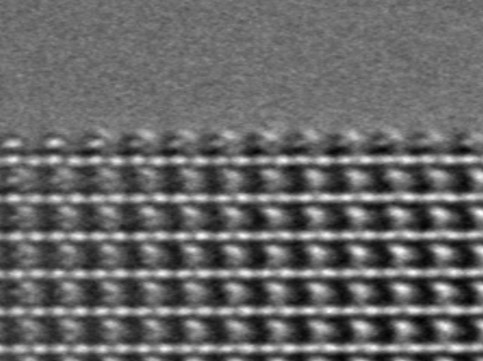 The Electron Microscopy Center at Argonne National Labs currently operates and administers seven full-time user instruments
together with support facilities that include specimen preparation, image analysis and computational resources. a
FEI Titan 80-300 ST, is the EMC's high resolution imaging TEM. It has a CEOS Cc/Cs corrector on the imaging side of the
column to correct both spherical and chromatic aberrations.
The Electron Microscopy Center at Argonne National Labs currently operates and administers seven full-time user instruments
together with support facilities that include specimen preparation, image analysis and computational resources. a
FEI Titan 80-300 ST, is the EMC's high resolution imaging TEM. It has a CEOS Cc/Cs corrector on the imaging side of the
column to correct both spherical and chromatic aberrations.
|
|
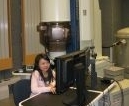 The Electron Microscopy Service at UIC is a central facility offering access to scanning, transmission
and scanning transmission electron microscopes on a pay-per-use basis. Investigators are encouraged to
learn how to operate the instrumentation themselves, however, the EMS staff are available to carry out
experiments for those investigators who only occasionally require electron microscopy service.
The Electron Microscopy Service at UIC is a central facility offering access to scanning, transmission
and scanning transmission electron microscopes on a pay-per-use basis. Investigators are encouraged to
learn how to operate the instrumentation themselves, however, the EMS staff are available to carry out
experiments for those investigators who only occasionally require electron microscopy service.
|
|
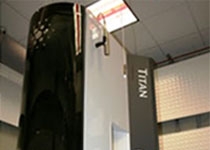 The Materials Science Center (MSC) at the University of Wisconsin-Madison is a resource for instrumentation and expertise
to characterize materials and nanostructures. The MSC provides state-of-the-art instrumentation, support facilities, and
expert technical assistance for research and education in materials, and serves materials science research needs of the
University of Wisconsin-Madison, the state of Wisconsin, and the nation.
The Materials Science Center (MSC) at the University of Wisconsin-Madison is a resource for instrumentation and expertise
to characterize materials and nanostructures. The MSC provides state-of-the-art instrumentation, support facilities, and
expert technical assistance for research and education in materials, and serves materials science research needs of the
University of Wisconsin-Madison, the state of Wisconsin, and the nation.
|
|
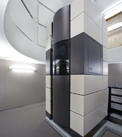 The TEAM I microscope at the National Center for Electron Microscopy is a double-aberration-corrected (scanning)
transmission electron microscope (STEM/TEM) capable of producing images with 50 pm resolution. The basic instrument
is a modified FEI Titan 80-300 microscope equipped with a special high-brightness Schottky-field emission electron source,
a gun monochromator, a high-resolution GIF Tridiem energy-filter, and two CEOS hexapole-type spherical aberration
correctors and a chromatic aberration corrector. The illumination aberration corrector corrects coherent axial
aberrations up to 4th order, as well as 5th order spherical aberration and six-fold astigmatism. The imaging aberration
corrector fully corrects for coherent axial aberrations up to 3rd order and partially compensates for 4th and 5th
order aberrations.
The TEAM I microscope at the National Center for Electron Microscopy is a double-aberration-corrected (scanning)
transmission electron microscope (STEM/TEM) capable of producing images with 50 pm resolution. The basic instrument
is a modified FEI Titan 80-300 microscope equipped with a special high-brightness Schottky-field emission electron source,
a gun monochromator, a high-resolution GIF Tridiem energy-filter, and two CEOS hexapole-type spherical aberration
correctors and a chromatic aberration corrector. The illumination aberration corrector corrects coherent axial
aberrations up to 4th order, as well as 5th order spherical aberration and six-fold astigmatism. The imaging aberration
corrector fully corrects for coherent axial aberrations up to 3rd order and partially compensates for 4th and 5th
order aberrations.
|
|
 NUANCE provide and continually update state-of-the-art and core analytical characterization instrumentation resources,
with 24/7 open access, for all of NU and beyond. NUANCE aspires to be a pro-active and integral part of all scholarly
activities related to characterization at and beyond NU.
NUANCE provide and continually update state-of-the-art and core analytical characterization instrumentation resources,
with 24/7 open access, for all of NU and beyond. NUANCE aspires to be a pro-active and integral part of all scholarly
activities related to characterization at and beyond NU.
|
|
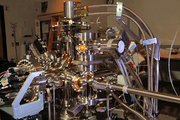 Northwestern University Center for Atom Probe Tomography (NUCAPT) employs three-dimensional atom probe tomography (3DAP),
which is a combination of a field ion microscope and time-of-flight mass spectrometer. 3DAP tomography involves the atom-by-atom dissection of a small volume of a material, where atoms at the apex of the specimen tip to
are ionized and accelerate away from the
positively-charged tip and towards a detector. The detector records both the ion's time-of-flight (and hence its
mass-to-charge ratio - its chemical identity) and its impact position (location on the tip
surface).
Northwestern University Center for Atom Probe Tomography (NUCAPT) employs three-dimensional atom probe tomography (3DAP),
which is a combination of a field ion microscope and time-of-flight mass spectrometer. 3DAP tomography involves the atom-by-atom dissection of a small volume of a material, where atoms at the apex of the specimen tip to
are ionized and accelerate away from the
positively-charged tip and towards a detector. The detector records both the ion's time-of-flight (and hence its
mass-to-charge ratio - its chemical identity) and its impact position (location on the tip
surface).
|
|
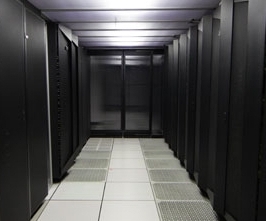 Quest is Northwestern University's high performance computing system. Housed at one of the University's
secure Data Center facilities, it offers a large shared computational facility. Designed as a general use cluster,
Quest supports the majority of HPC applications at Northwestern and is built to accommodate a wide variety of codes
with great economy. Quest is used for projects that require high-performance capability due to computationally intensive
tasks, such as intense numerical calculations or dealing with extremely large datasets.
Quest is Northwestern University's high performance computing system. Housed at one of the University's
secure Data Center facilities, it offers a large shared computational facility. Designed as a general use cluster,
Quest supports the majority of HPC applications at Northwestern and is built to accommodate a wide variety of codes
with great economy. Quest is used for projects that require high-performance capability due to computationally intensive
tasks, such as intense numerical calculations or dealing with extremely large datasets.
|
|
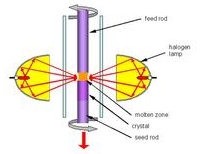 The Poeppelmeier Crystal Growth Facility uses the traveling solvent zone method in a four mirror optical floating zone furnace.
In an optical floating zone furnace, a molten liquid zone forms from the confluence of four light sources, reflected by four
ellipsoidal mirrors. A liquid zone is established between a support rod and a dense feed rod of cylindrical shape. Growth
occurs by upward translation of the liquid zone along the feed rod at growth rates ranging from 0.1 mm/hr to 1 cm/hr.
The Poeppelmeier Crystal Growth Facility uses the traveling solvent zone method in a four mirror optical floating zone furnace.
In an optical floating zone furnace, a molten liquid zone forms from the confluence of four light sources, reflected by four
ellipsoidal mirrors. A liquid zone is established between a support rod and a dense feed rod of cylindrical shape. Growth
occurs by upward translation of the liquid zone along the feed rod at growth rates ranging from 0.1 mm/hr to 1 cm/hr.
|
|
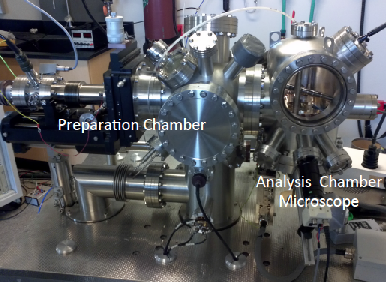 The Scanning Tunneling Microscopy (STM) lab at the University of Virginia houses an Omicron Nanotechnology Variable Temperature
STM, which operates under ultrahigh-vacuum conditions. It is equipped with a preparation chamber with multiple deposition sources
including electron beam evaporators, and thermal evaporation sources, and a high temperature heating system. A wide range of
materials from metals to semiconductor and oxide surface is studied. We specialize in the investigation of surface reactions relevant
to the initial stages of corrosion and oxidation, fundamental processes in thin film growth and the synthesis of nanoscale building blocks.
In addition, we have expertise in electron spectroscopy (photoelectron spectroscopy, NEXAFS and related methods) and use
synchrotron facilities such as Brookhaven National Laboratory, MaxLab or Advanced Light Source to target specific questions related to
compositional and bonding analysis.
The Scanning Tunneling Microscopy (STM) lab at the University of Virginia houses an Omicron Nanotechnology Variable Temperature
STM, which operates under ultrahigh-vacuum conditions. It is equipped with a preparation chamber with multiple deposition sources
including electron beam evaporators, and thermal evaporation sources, and a high temperature heating system. A wide range of
materials from metals to semiconductor and oxide surface is studied. We specialize in the investigation of surface reactions relevant
to the initial stages of corrosion and oxidation, fundamental processes in thin film growth and the synthesis of nanoscale building blocks.
In addition, we have expertise in electron spectroscopy (photoelectron spectroscopy, NEXAFS and related methods) and use
synchrotron facilities such as Brookhaven National Laboratory, MaxLab or Advanced Light Source to target specific questions related to
compositional and bonding analysis.
|
|
 Facilities
Facilities
 Facilities
Facilities